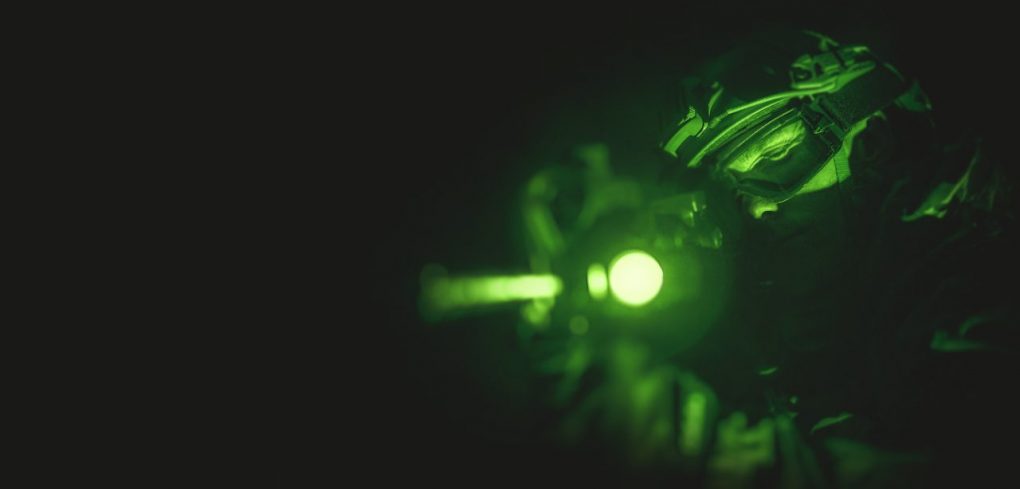Night vision devices operate on powerful technology that can be harnessed for a wide variety of uses. This technology has developed and improved for decades. Over the years. these developments have led to significant night vision innovations across the marketplace.
For those seeking night vision gear, the many price points and extensive variety of products can sometimes seem daunting. Yet, increasing your familiarity and learning some helpful night vision terminology can go a long way to understanding how the technology works and what makes it so powerful.
Night vision devices are currently available in several different generations. Having a strong grasp of these generations and their differences can result in a better appreciation of the tech, its functionality, and how to know which device is best suited for your needs.
What Are Night Vision Generations?
Night vision generations refer to the different levels of technological advancement that power night vision devices. Today, there are three generations of night vision technology, including generations 1, 2, and 3.
The lower the night vision generation classification, the less advanced the tech is for that device. Attachments are available for all generations of devices, such as IR illuminators and pieces incorporating white phosphor technology.
There are basic features or capabilities all night vision devices have in common. Essentially, each NVD functions by magnifying ambient light with image intensifier tubes, enhancing vision in low-light conditions. NVD tech also doesn’t respond well to bright light sources. NVD tech also doesn’t respond well to bright light sources.
Yet, the quality of the parts (such as the image intensifier tube or micro-channel plate) will vary between products, and you’ll likely notice much-improved image quality and enhanced night vision capabilities when you look at the higher generations.
Generation 1 Devices
Generation 1 devices utilize the oldest night vision technologies. The result is reduced functionality when compared to higher generations. However, this also means that gen 1 tech tends to have a lower price point than more advanced night vision devices.
Night vision scopes on gen 1 devices typically offer a range of about 75 yards. They also rely on an IR illuminator, an attachment that essentially projects light into the environment when there isn’t enough available light for the micro-channel plate to produce a solid image.
The signal-to-noise ratio is lower on gen 1 devices, so the clarity of the image isn’t as good. Also, these devices don’t last nearly as long as others (with only about 1500 hours or so of estimated tube life).
Gen 1 tech often has difficulty providing clarity on the outer edges of the field of vision, reducing overall visibility.
Generation 1 devices are generally considered entry-level gear, and may be a good choice depending on your budget. But, such devices won’t offer the quality or functionality of gen 2 and gen 3 equipment.
Generation 2 Devices
In terms of functionality, generation 2 night vision devices are much closer to gen 3 night vision than gen 1. These devices typically have improved clarity across viewing areas (even on the edges) and better overall resolution.
Gen 2 devices also offer significant improvement in terms of their range of vision, as they typically range about 200 yards (more than double the range of a gen 1 device). They also have an improved signal-to-noise ratio.
In addition, gen 2 devices usually boast longer battery life, and their life expectancy is much longer than gen 1 devices (up to three times as long). Gen 2 devices typically perform well without the addition of an IR illuminator (though one may still be helpful), making them much more efficient in exceptionally dark conditions.
Different models offer different specs. Typically, gen 2 is an excellent option when you’re looking for a higher-performance night vision device without the (typically) higher cost of gen 3 devices.
Generation 3 Devices
When it comes to night vision, gen 3 night vision technology is the highest level available. Generation 3 devices provide the longest range, the highest quality resolution, and the highest operational efficiency.
There’s a good reason why the United States Military relies on gen 3 devices. The high-performance tubes and top-notch features give this generation of night vision goggles and other devices a sharper image, exceptional low-light performance, and superior overall performance.
The range of gen 3 devices is unmatched, reaching over 300 yards. And due to ion-barrier film, gen 3 NVD life expectancy is the longest possible. Gen 3 tech’s ability for “passive operation” allows for more covert use of the equipment, and night vision users find that the image resolution is unmatched. Many gen 3 devices also have auto-gated tubes that help the device handle artificial light better.
If you’re looking for the highest quality, generation 3 is probably the best option. And if you’re worried about the cost, it’s important to note that there are gradations within night vision generations. So a more budget-friendly generation 3 device might offer you the quality you need for your application.
Choosing the Right Gear for You
To find the very best night vision or thermal imaging gear, contact Steele Industries to get expert help. There are many NVD products out there, and Steele Industries can help you sort through your options to choose the best product possible.


